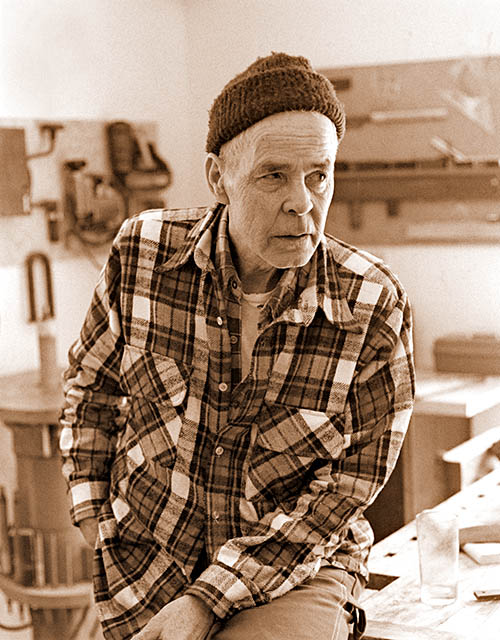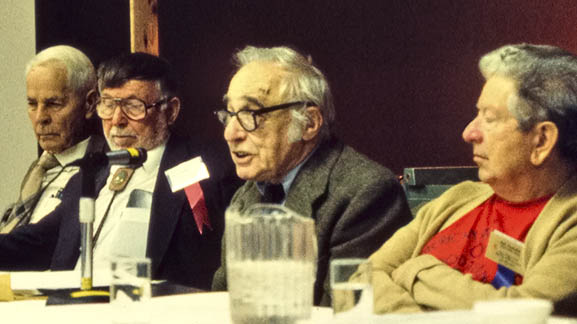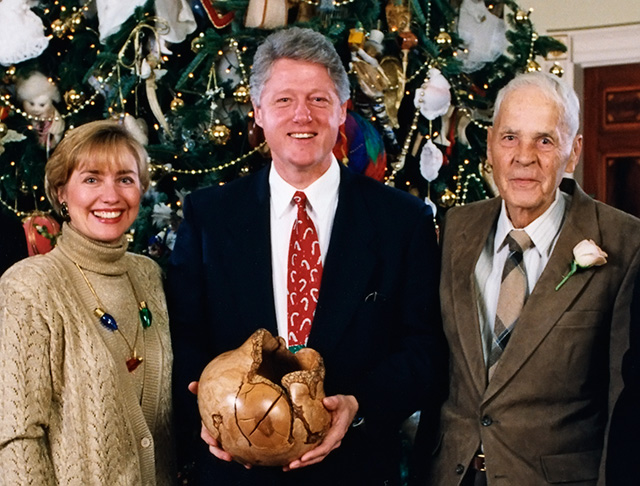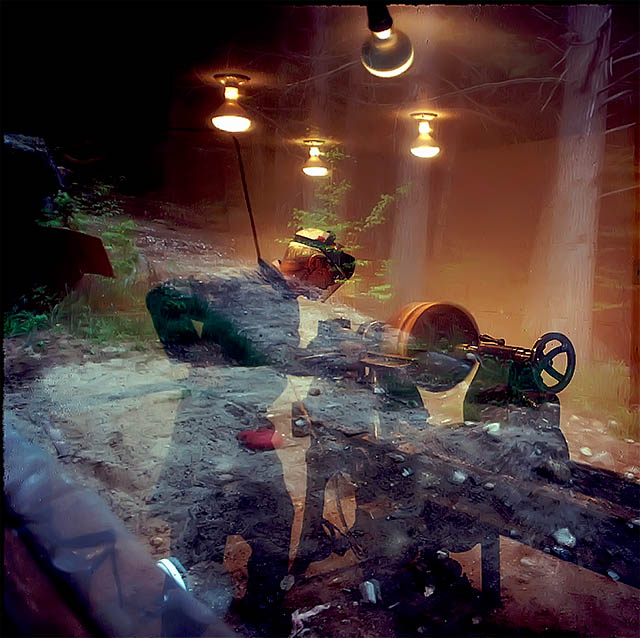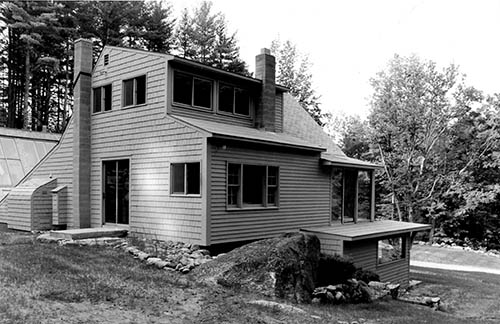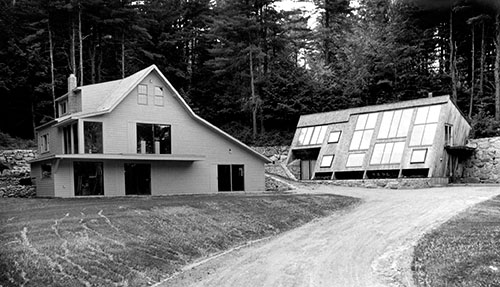|
July 5, 1911 - November 24, 2000
Melvin Lindquist (left), Rude Osolnik, James Prestini, Bob
Stocksdale
(Second AAW Conference, Philadelphia, 1988)
PHOTO: © 1988 Mark Lindquist / LINDQUIST STUDIOS-
ALL RIGHTS RESERVED
President Clinton holds Hopi Bowl,
by Melvin Lindquist (right) during the reception for the artists of the White
House Collection of American Crafts, December 1993. Mel Lindquist and his son
Mark, were among approximately 40 artists honored at the White House by the
President and First Lady, Hillary Clinton.
|
MELVIN LINDQUIST (1911-2000)
|
Born July 5, 1911,
Kingsburg, CA
BS: Oakland Polytechnic College of
Engineering, 1935
Fellow: American Society of Quality Control
Selected Awards
"New England Living Art Treasure," University of Massachusetts
at Amherst,1983
The First "National Woodturning Conference Award" for
outstanding achievements in Studio Woodturning, Arrowmont
School of Arts and Crafts, 1985
Lifetime Member, American Association of Woodturners, 1993
Melvin Lindquist began turning in the 1930's as a vertical
turret lathe operator for the General Electric Company. In his
shop at home, he began an exploration of the vase form through
woodturning which has continued for over fifty years. He began
turning Spalted wood in the late 1950's when he discovered the
wood on his land in the New York Adirondacks. Using the skills
and knowledge gained through his engineering and machinist's
background, Lindquist developed new tools (such as his carbide
tipped turning tools) and techniques (such as blind boring and
reverse turning) for working with difficult woods and for
turning various forms. His continuing studies of ancient
Oriental, Greek and Indian ceramic vases have been essential
to his pursuit of the ideals of the vase form. He began
exhibiting his work through craft fairs and museum shops in
the early 1960's and is recognized as one of the founding
fathers of the current studio woodturning movement.
Melvin's work is included in major national and international
private collections, museums and corporations.
Selected Museum and Corporate Collections
Fine Arts Museums of San Francisco
The Metropolitan Museum of Art, New York City
Mint Museum of Craft and Design, Charlotte, North Carolina
Mobile Museum of Fine Arts, Alabama
Renwick Gallery, Smithsonian American Art Museum, Washington,
DC
Schenectady Museum, Schenectady, New York
The White House Collection of American Crafts, Washington, DC
U. S. News and World Report Corporate Headquarters,
Washington, DC
Bowater Corporation, Knightsbridge, London, England
Ethan Allen Corporate Headquarters, Danbury, Connecticut
Quincy State Bank, Quincy, Florida |
|
Rare Surviving Early Newspaper Clipping
of Mel (left) and his wife Helen (center)
|
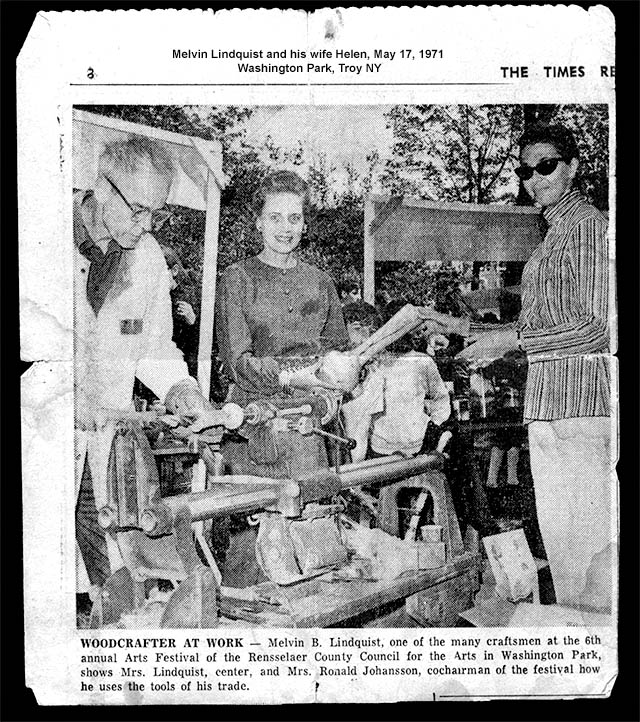
|
Melvin and his son Mark in "The Burl Yard" in Henniker, NH, circa 1979
Photo: Kathy Lindquist
|
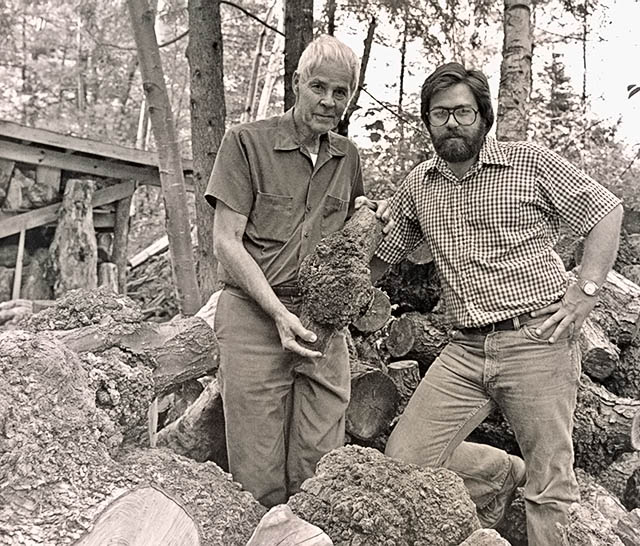
|
Photo below: Mel
Lindquist turning in his streamside studio in New Hampshire, circa 1983
Photo
© David Ellsworth,
taken by David circa 1983, edited by Mark
Lindquist, 2006
Shot from outside the studio, shows Melvin turning with stream and trees
reflected in window.
Mel's Streamside studio is the lowest
room on right - below the gallery.
The long horizontal window looked out on the stream (on right out of view)
Mark finished the house and studio (by 1985) that he and Mel started,
beginning in 1969 in Henniker, New Hampshire.
Mark and Kathy built the solar house
(right) for Melvin and Helen, beginning in 1979.
Melvin had his turning studio (lower left) beneath the gallery (2nd
Floor).
The Lindquist's
moved their home and studio to Quincy, FL
(beginning in 1983) where it is still in operation by Mark and Kathy
Lindquist today.
Photos
© Mark and Kathy
Lindquist, 1985 ALL RIGHTS
RESERVED
Mel Lindquist at his lathe,
Quincy, FL, (early 2000)
Photo: Gary Stevens
|
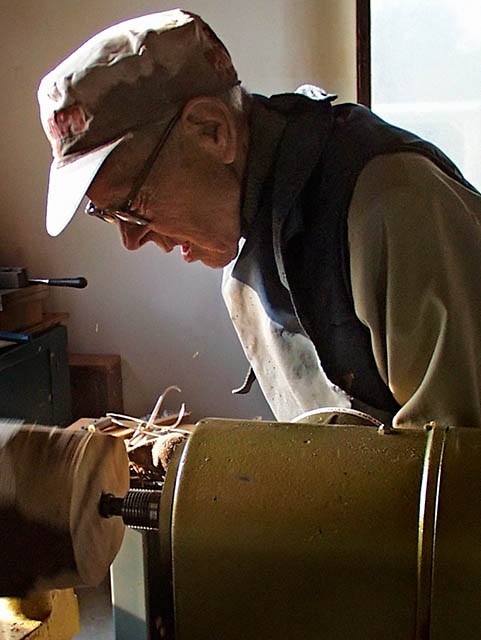
|
Melvin Lindquist's Lathe and tools as he left them on his last day in
the studio,
(early November, 2000), Quincy, FL.
Photo: Mark Lindquist
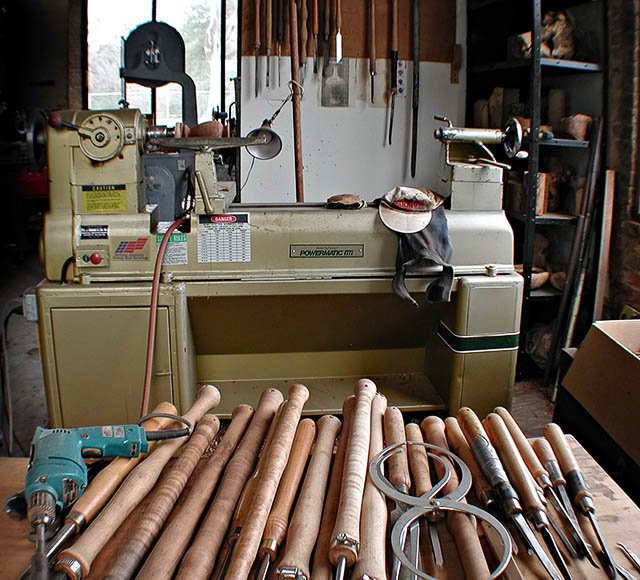 |
The last piece turned by Melvin, (unfinished), early November, 2000
Photo: Mark Lindquist
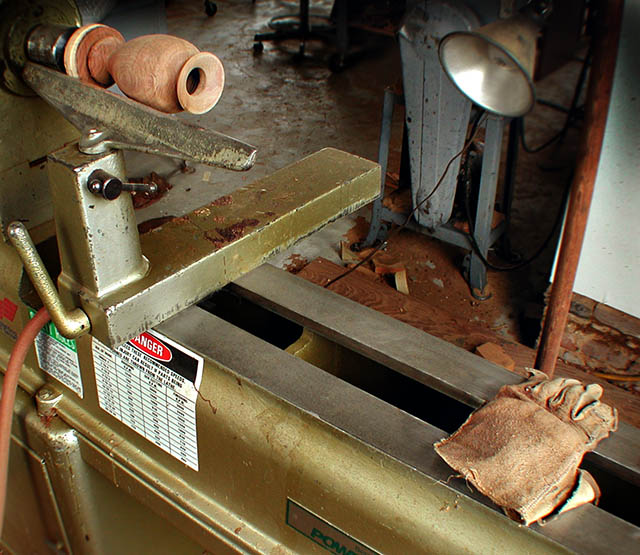
"And in the end, the
love you take is equal to the love you make."
-Paul McCartney
|
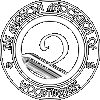
Honorary
Lifetime Member
American Association of
Woodturners ~ 1994
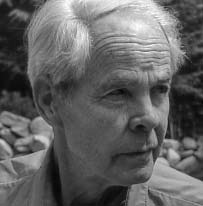
Melvin Lindquist (1911–2000) was a master machinist,
aeronautical engineer,
army surveyor, manager of quality control, and one of the
founders of the studio woodturning movement. He began
woodturning in high school in California in 1928. While working
for the General Electric Company in San Jose and then
Schenectady, NY, he turned wood as a hobby. Mel began turning
spalted wood in the late 1950s after discovering the wood on his
land in the New York Adirondacks. He invented new tools and
groundbreaking techniques for hollowing vessels and for working
with spalted wood. Blind boring, Mel’s pioneering technique, is
foundational to woodturning today. Mel retired early from GE in
1968 to pursue woodturning full-time, and began showing his work
at craft fairs, galleries and museums. In the 1970s and 1980s,
Mel shared his techniques and vision through workshops and
symposiums. In 1981, he and son Mark established the woodturning
program at Tennessee’s Arrowmont School of Arts & Crafts. Mel
was a fellow of the American Society for Quality Control and was
named a New England Living Art Treasure by the University of
Massachusetts in 1983.
(Courtesy
American Association of Woodturners)
|
|

|
